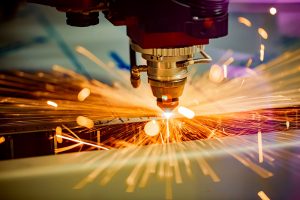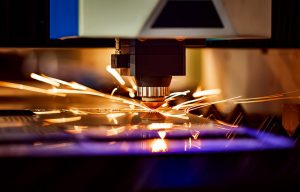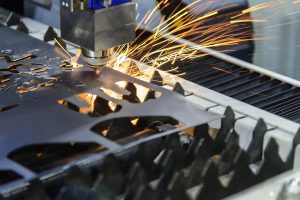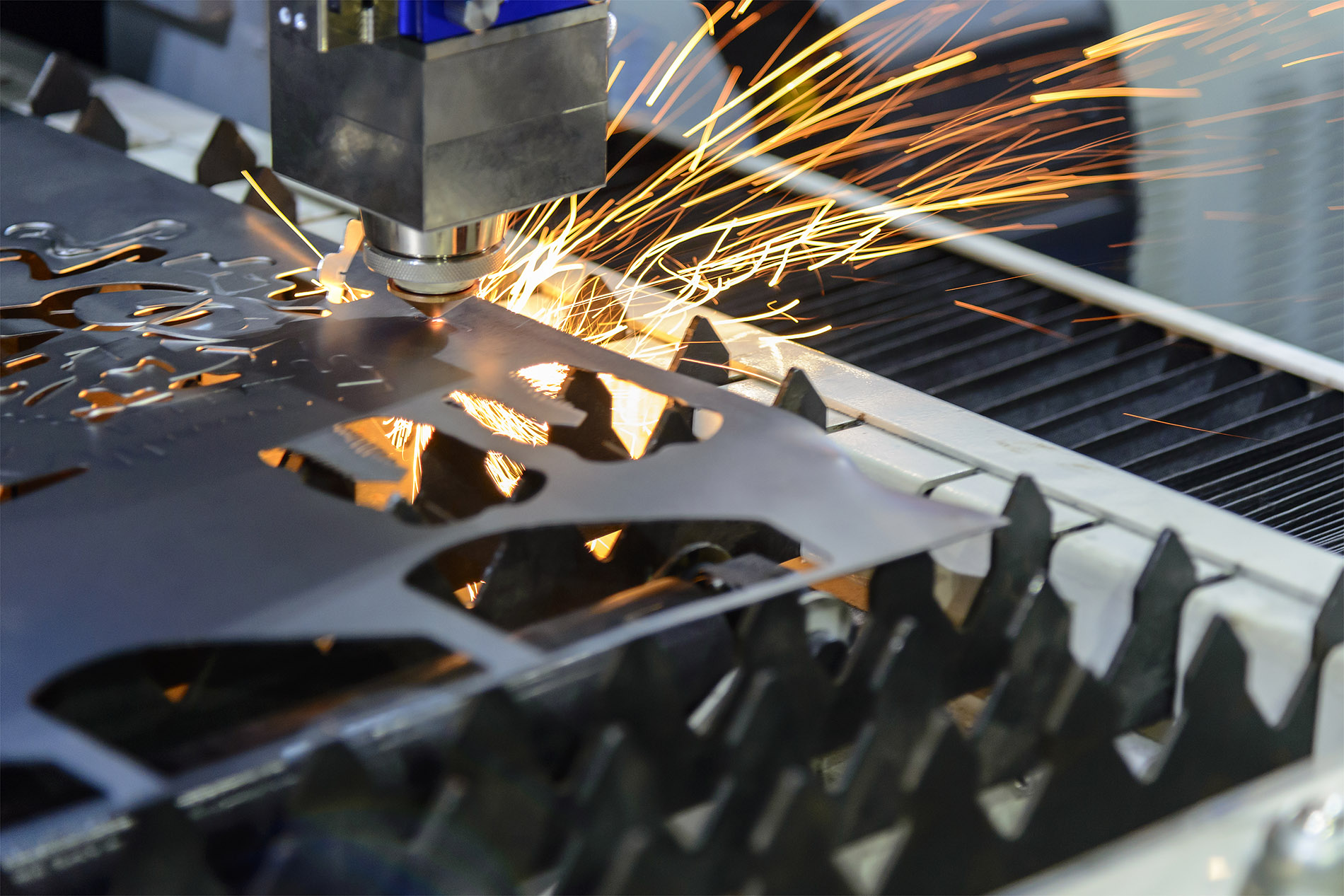
Microform Precision provides laser cutting for a wide variety of materials, including steel, stainless steel, aluminum, non-ferrous metals, and more. Our Amada fiber optic laser cutter and two Bystronic CO2 laser cutters give us the capability to handle high-volume production runs with accuracy and efficiency.
How Does Laser Cutting Work?
In CNC (computer numerical control) laser cutting, a computer directs a high-powered laser to cut a specified shape from sheet metal or other material. The focused laser burns away, melts, or vaporizes the material, leaving the desired shape behind. Laser cutting creates precision cuts and smooth edges at faster speeds than other cutting techniques. CNC laser cutting is also more environmentally-friendly than some other cutting methods, using less energy, and producing less material waste.
Applications for Laser Cutting

Laser cutting provides a fast, accurate and provides a high quality cut for appropriate materials. There is a low set up time relative to other cutting methods. This allows for competitive pricing even at lower quantities.
Laser cutting is well suited for mild steel (including pre-plated steels like galvanized steel), stainless steel, aluminum. Brass and copper can be handled by fiber optic laser cutting.
Laser Cutting Considerations
Extremely small features may not cut well. A good rule of thumb is that no feature should be smaller than the thickness of the material. The same rule applies to the distance between features or cut lines of any other variety.
Tolerances
| Feature Location | +/- 0.005″ |
| Hole Diameter | +/- 0.005″ |
Our Laser Cutting Equipment
| Make | Model | Power | Max Sheet Size | Technology | Applications |
|---|---|---|---|---|---|
| Bystronic | Bystar | 4000 watts | 60″ x 120″ | CO2 laser cutting | Mild steel up to 1/2″. Stainless steel up to 3/8″. Aluminum up to 3/8″. |
| Bystronic | Byspeed | 4400 watts | 60″ x 120″ | CO2 laser cutting | Mild steel up to 3/8″. Stainless steel up to 3/16″. Aluminum up to 1/8″. |
| Amada | Ensis 3015 AJ 2K | 2000 watts | 60″ x 120″ | Fiber optic laser cutting | Mild steel up to 3/4″. Stainless steel up to 3/8″. Aluminum up to 5/16″. |
| Amada | Ensis 3015 AJ 3K with AMS 3015 Cycle Loader | 3000 watts | 60″ x 120″ | Fiber optic laser cutting with auto load and unload | Mild steel up to 3/4″. Stainless steel up to 3/8″. Aluminum up to 5/16″. |
Pros and Cons of Fiber Optic vs CO2 Laser Cutting

Fiber optic laser cutting is preferable where thinner material needs to be cut. The speed is much greater on thin sheet metal with fiber optics than with CO2 laser cutting. Fiber optic laser cutting is also used for copper and brass, as there is less chance of back reflections causing damage to the CNC machine. Thicker plates of sheet metal can also be processed and cut efficiently.
Where CO2 laser cutting has an advantage is in the cutting speed of thicker materials, typically above 13/64″. CO2 laser cutting also can go faster in a straight line, with a faster piercing times at the beginning of the cut. When cutting thicker sheet metal, CO2 cutting can also result in a smoother surface finish vs fiber optic laser cutting.

